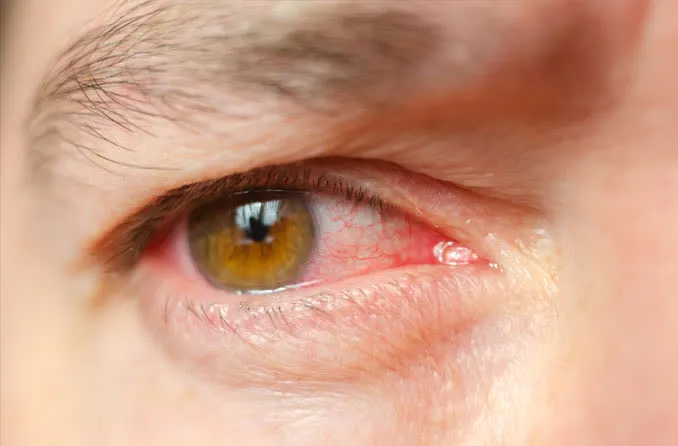Keratoconus is a progressive eye disease in which the cornea (the outermost layer of the eye) thins and takes on a conical shape, leading to vision impairments. It typically begins during adolescence or the early twenties and may progress over time, negatively affecting vision quality. In a healthy eye, the cornea maintains a smooth, dome-like shape, whereas in keratoconus, the cornea becomes thinner and takes on an irregular conical form. This change disrupts visual acuity and leads to the rapid progression of refractive errors such as myopia and astigmatism.
What Are the Symptoms of Keratoconus?
Keratoconus symptoms usually progress slowly and may be mild in the early stages. However, as the disease advances, symptoms become more pronounced. The most common symptoms include:
- Blurred or distorted vision: Straight lines may appear wavy or misshapen.
- Light sensitivity: Bright lights may cause discomfort, especially at night.
- Frequent changes in prescription: A rapid increase in prescription strength or difficulty achieving clear vision with glasses or contact lenses.
- Vision loss: In advanced stages, significant vision impairment can occur.
- Eye irritation and itching: Patients often feel the urge to rub their eyes, which can accelerate the progression of the disease.
What Causes Keratoconus?
The exact cause of keratoconus is not fully understood, but several factors may contribute to its development:
- Genetic predisposition: Individuals with a family history of keratoconus are at a higher risk.
- Eye rubbing habits: Frequent and vigorous eye rubbing can damage the cornea and contribute to the progression of keratoconus.
- Connective tissue disorders: Keratoconus may be associated with connective tissue disorders such as Marfan syndrome and Ehlers-Danlos syndrome.
- Allergic eye conditions: Chronic eye irritation and itching can increase the risk of keratoconus.
How Is Keratoconus Diagnosed?
Keratoconus is diagnosed through a detailed eye examination and advanced imaging techniques. The most commonly used diagnostic methods include:
- Visual Acuity Test: Detects changes in prescription strength and reductions in vision clarity.
- Topography Test: Maps the cornea to identify irregularities and thinning.
- Pachymetry: Measures corneal thickness to determine the degree of thinning.
- Retinoscopy: Examines how light is reflected in the eye to detect abnormal refractive patterns.
Treatment Options for Keratoconus
Various treatment methods are available to slow the progression of keratoconus and preserve vision:
Glasses and Contact Lenses
-
In the early stages, glasses or soft contact lenses may be used.
-
For moderate to advanced cases, rigid gas-permeable contact lenses are preferred.
- Hybrid lenses and scleral lenses provide a better fit over the cornea for clearer vision.
Corneal Cross-Linking (CXL)
-
A treatment designed to halt disease progression.
-
Uses riboflavin (vitamin B2) and ultraviolet (UV) light to strengthen the cornea.
- Most effective when applied at an early stage, especially in younger patients.
Intracorneal Ring Segments (ICRS)
-
Small plastic rings are inserted into the cornea to reshape it and improve vision.
Corneal Transplant (Keratoplasty)
-
Used for advanced keratoconus cases.
-
The damaged corneal tissue is replaced with healthy donor corneal tissue.
-
Both sutured and sutureless (Femtosecond Laser-Assisted) techniques may be used.
Keratoconus can be effectively managed if diagnosed early. Regular eye check-ups are crucial in preventing disease progression. Early interventions, such as contact lenses or cross-linking treatment, can slow down the advancement, while surgical options may be necessary in later stages. To prevent vision loss, it is essential not to neglect routine eye examinations.









